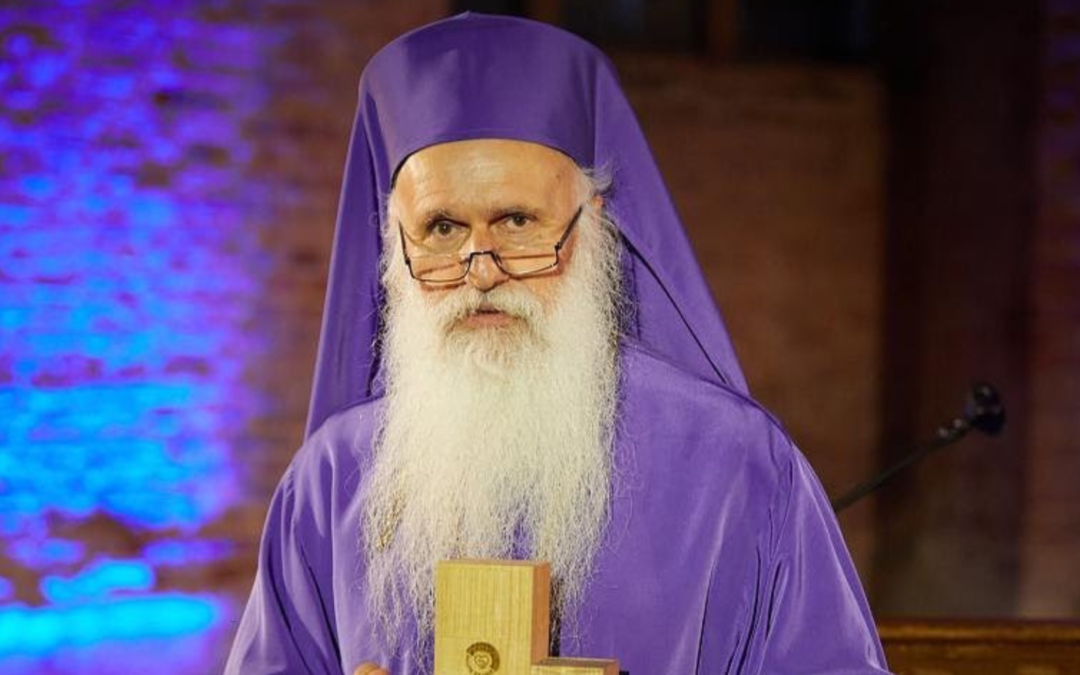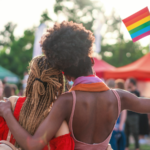Although small in number, it isn’t hard to locate Baptists in the United States who embrace interfaith dialogue and the inclusion of LGBTQ+ individuals into all realms of church life. If you are a regular reader of Good Faith Media, you likely know at least a few.
That isn’t the case for worldwide Baptists.
However, an outlier is emerging in the Republic of Georgia, a small Black Sea nation that straddles the line between East and West. There, led by Bishop Malkhaz Songulashvili, Baptists are attracting attention from supporters and detractors alike, advocating for and leaning into expansive, inclusive faith practices.
During his recent visit to the U.S., I interviewed Bishop Songulashvili about his faith journey, Georgian Baptists, and the Peace Project in Tbilisi, which is bringing worldwide faith communities together under one roof. I have edited the interview to account for space and clarity.
Craig Nash: Much of the public information about you and your work focuses on your ministry as an adult. Can you briefly talk about how your early faith journey brought you to where you are now?
Malkhaz Songulashvili: I was born into a Baptist family in 1963. My father was an ordained Baptist minister, and my mother was a lay minister responsible for administering the Eucharist. Both of them were immensely active in the church. Being born in that context (Soviet Georgia) meant being born into a dissident family. So, I grew up in a dissident family, and eventually, I found myself to be dissident in many respects.
There were moments in my [younger] life when I wasn’t terribly happy with that. When you are in class, you like to be liked. You don’t want to be pointed at by the teacher as coming from a religious family.
But eventually, I started appreciating the value of being a dissident. I’m still a dissident, I’m afraid, and there was no day in my life that I wasn’t a dissident. So this is my identity, [which is] deeply rooted in Baptist tradition. (My father came from the Baptist tradition, and my mother came from an evangelical church.)
In 1944, Stalin ordered all Protestant churches to merge. In Georgia, this brought together Baptists and evangelicals, which is how my parents met. As a result of Stalin’s edict, I am here. That was my initial stage in Christianity.
I was 17 years old when I got baptized. It was January 19, the day we traditionally celebrate baptism in Eastern Europe, [coinciding with] the feast of the Baptism of Jesus. On the 18th, I was in agony because I wanted to be baptized, but it meant that all my life would change because all the doors would be closed for education, academic life, etc. In Soviet times, you couldn’t attend university without being a member of the youth Communist party, which I wasn’t, and I couldn’t have joined as a Christian.
At the same time, I felt a commitment to the gospel and my church. So I was in agony on the 18th and couldn’t wait until the morning. So I woke my father up at 4 a.m. and told him that I decided to be baptized, knowing it might ruin my life. My father was delighted and took me, with my mother, to the river, which was nearby. I was baptized at 5 a.m. in the freezing cold in January.
Ironically, I decided to apply to the university anyway, despite not being in the [Communist] party, and I was accepted. They couldn’t imagine anybody would dare to apply to the university without being a party member.
(Songulasvili then described how he essentially flew under the radar in university. He graduated and was asked to stay on as a teacher.)
CN: What did you study?
MS: I studied history, archaeology, Greek and Hebrew Hebrew. Okay.
CN: How did you transition from academia to ministry?
MS: I was a young professor at the university when the Soviet Union collapsed, and I was called by my church to be ordained and take on the leadership of the church.
CN: Can you talk about your relationship with other churches in Europe?
MS: When the Soviet Union collapsed, we gained independence and the freedom to forge our own identity. Then, the former Soviet Union churches disowned us. In 2005, they declared us to be apostates because we were ordaining women and praying with other Christians.
CN: Was this even before you began affirming the LGBTQ+ community?
MS: Yes, long before that and even before our commitment to interfaith peace through dialogue.
CN: How did your commitment to interfaith work begin?
MS: For our church, interfaith work goes back to the second Russo-Chechen war, when a considerable number of refugees from Chechnya came to Georgia. We found ourselves serving them while resisting the temptation to use our resources and power to convert them to Christianity. We didn’t distribute a single leaflet, and European Baptists and others criticized us for that.
That was a time for the church to exercise the foundational principle of the Christian ethic of unconditional love. We had preached about it a lot, but that was the first time we exercised it in practice. These weren’t just Muslims; they came from regions that had been traditional enemies of Georgia.
Personally, it (the commitment to interfaith dialogue) happened much earlier. I can even tell you the day–May 13, 1986.
As a young scholar, my Hebrew teacher was a Jewish rabbi and the only person in the Soviet Union who was allowed to teach Hebrew. I studied with him for a couple of years. He died, and I was invited to his funeral. When I was coming home on the bus, I thought, “I can’t believe in a God who doesn’t accept somebody like my teacher, whom I love dearly. How would God not love and accept him simply because he is not a Baptist?”
CN: In some of your writings and interviews, you speak about a “theology of beauty.” Can you elaborate on that?
MS: There was no single day since the establishment of the Baptist Church in Georgia on August 20, 1867, when we have not been persecuted in one way or another. For over 150 years, we had to learn how to survive, and the theology of beauty has been our means of survival. This has always been there, but it became more explicit after the breakup of the Soviet Union. So here’s the meaning: You come across different types of ugliness as an individual or a congregation or denomination.
What do you do? You respond to this ugliness with beauty. It can be a project of beauty. It can be a beautiful action. It can be a statement or liturgy that may be beautiful. We learned that the best way to survive and maintain sanity is not to be confrontational or antagonistic, but to respond to every single expression of ugliness with the project of beauty.
We (Georgian Baptists) are a very small minority, but we have been doing advocacy work for Muslims, who are 12% of the population, for decades now. This prepared us to give full-fledged support for marginalized members of the LGBT community.
On May 17, 2013, a very small group of people wanted to stand in front of the Georgian parliament building and express solidarity with members of their LGBTQ+ family. They were going to stand in silence in front of the Georgia Parliament for about an hour and then go home. No banners, no flags, nothing. Against these 30-50 people, the Georgian Orthodox Church organized 45,000 people–bishops, clergy, nuns, monks, and altar boys, among many others, with banners and crosses.
That was the breaking point for us. We knew we couldn’t turn a blind eye to that. We made public statements and numerous daily appearances. I wrote an article about sexuality in general and homosexuality in particular. By this, we made ourselves more conspicuous, even among religious minorities, who all, along with the religious majority, approved of what happened on May 17.
Editor’s Note: More about Bishop Songulashvili’s interfaith work, including information about the Peace Cathedral, can be found in the April-June 2025 issue of Good Faith Magazine, which is a free resource for all Good Faith Advocates. More information on becoming an Advocate can be found here.
Senior Editor at Good Faith Media.





